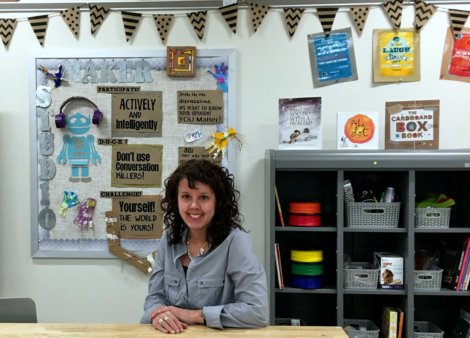
Using BrainPOP ELL In Rural Areas of Vietnam
Posted by cemignano on
Guest-blogger Ronit Nitzan-Inbar shares her experience using BrainPOP ELL to support English language learners in Vietnam. An Israeli living in Hanoi, Ronit has lived in the country for the past three years following her family’s relocation. Ronit is involved with several education community and charity projects in Vietnam, in Hanoi and the Nghe An province.
As part of a Social Corporate Responsibility commitment of a Vietnamese company, TH MILK JSC, BrainPOP ELL has been used as a teaching tool in a project that’s just launched its second year in rural Vietnam.
TH MILK JSC produces milk and milk products at a dairy farm located in the north central coast region of Vietnam, in one of the poorest provinces in the country. The main goal of the project is to use TH employees’ knowledge of the English language to teach English at nearby schools.
Why English?
As in other developing countries, the English language acquisition is considered a significant advantage for the young generation. It opens opportunities for them and allows them to play an active role in the business, technology and academic global community. Nonetheless, the public schools in Vietnam lack progressive programs and teaching tools to support English language learners. The majority of the teachers are not native English speakers, and the learning is based mainly on reading and writing.
What Do We Do?
In the absence of many means of learning in the classrooms (books, games or flashcards are not to be found) we have decided to use what they do have: several PC’s and an internet connection.
The idea of using BrainPOP ELL as a teaching platform suited the conditions perfectly. In coordination with the school, the BrainPOP ELL curriculum is delivered in a weekly extra lesson. The volunteer tutors operate in teams of 2-3 people and work hard to adjust the lessons plans to the ground conditions; we use two classrooms, both equipped with a projector and internet. One of the two rooms is also equipped with 10 PC’s.
For each class, the weekly lessons take place alternately in those two rooms, aiming to allow as many students as possible access to the PC’s, having a personal experience working with the software. When not working with the PC’s, the lesson is delivered by one laptop that is projected on a screen.
We try to follow all the different activities offered on each lesson. We watch the videos together, repeat the words out loud together and keep looking for creative ways to engage the whole class with games, which are originally designed for individuals. We put particular emphasis on getting the kids to talk, encouraging them to repeat the right pronunciation as it sounds on BrainPOP, rather than to emulate the non-native speaker volunteers.
This school year we added a 2nd school to the program, with a total of over 350 kids taking part in the project.
BrainPOP ELL In a Developing Country
Although we do face different difficulties (mainly regarding maintenance of the equipment), we can say that the first year was extremely successful. BrainPOP ELL has brought an exciting and refreshing atmosphere to the classes, engaging the kids with the delightful animation and lovable characters. The appealing visuals and sounds, the humor, the diversified activities and the overall fun approach in which the learning is delivered through BrainPOP ELL is altogether different than what the kids and the teachers are used to.
The project echoed outside of school and drew the attention of the local district authorities, who expressed their interest in learning more about BrainPOP ELL and exposing English teachers to it. Workshops at school became a festive communal event and the end of year was grandly celebrated with the presence of distinguished officials and local TV cameras.
Using existing digital learning materials saves resources for the local system and makes it possible to build educational content with relatively low costs.
While most digital educational materials would oblige translation and/or contextualizing of the content to meet local conditions and needs, BrainPOP ELL can be used ‘as is’ even with the most basic knowledge of the language, which makes this tool globally accessible and friendly to all. This project is a good example for the expanding trend of using technology in education in developing countries.
For more smiles and faces visit the FB page: We love teaching English.
[youtube http://www.youtube.com/watch?v=Q9D-1shw4BU&w=400&h=300]
Or contact
ronitnitzan@gmail.com














